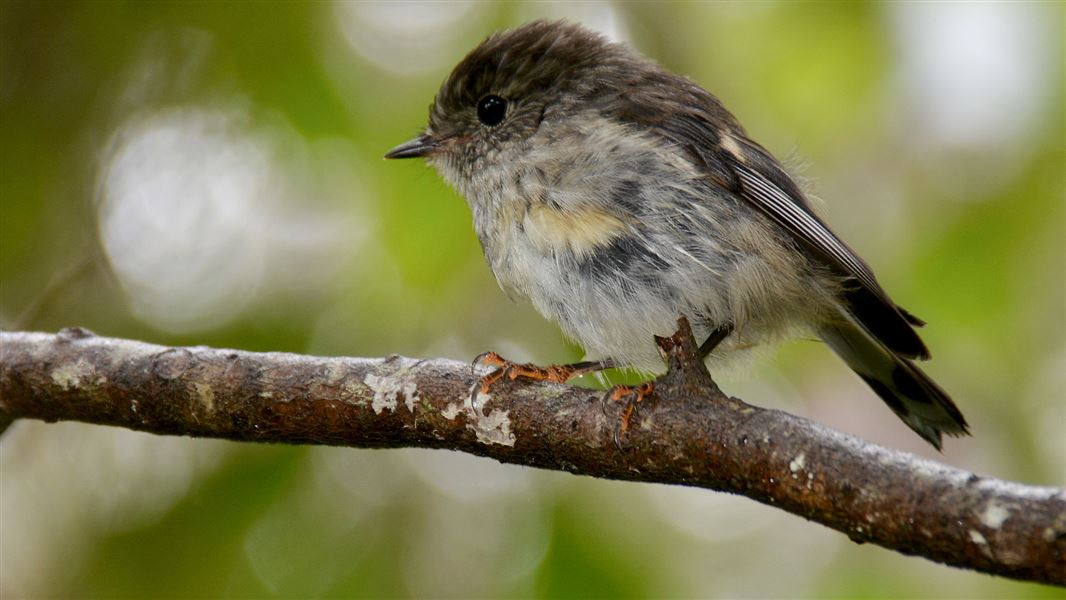There are five subspecies of tomtit (Petroica macrocephala), each restricted to their own specific island or island group: North Island, South Island, the Snares Islands, the Chatham Islands and the Auckland Islands.
The Māori name of the North Island tomtit is miromiro, while the South Island tomtit is known as ngirungiru.
New Zealand status: Endemic
Threats: Predation
Species information: Tomtit/miromiro on NZ Birds Online
Image gallery
Facts
- Although the New Zealand tomtit belongs to the Australasian robin family of birds it is not a robin.
- The tomtit is a small bird, about 13 cm long.
- They have large heads and short bills.
- The North Island and South Island subspecies of tomtits are smaller than their off-shore island relatives, weighing in at around 11 g. Birds from Snares Island can weigh almost twice as much as this (normally 20 g).
- The male North Island subspecies is distinctly black and white, with a black head, back, wings (with a white wing bar) and a white belly.
- The subspecies from the South Island, the Chatham Islands and Auckland Islands are similar, but have a distinctly yellow breast
- The Snares Island subspecies is entirely black.
- Each tomtit pair may raise up to three broods during a season, from September to January.
Sound recordings
Chatham Island tomtit song (MP3, 1,549K)
01:43 – Adult male in Glory Bay, Pitt Island, Chatham Islands.
North Island tomtit song (MP3, 2,808K)
02:59 – In mixed forest near Mount Bruce.
South Island tomtit song (MP3, 1,440K)
01:31 – Adult male South Island tomtit on Rabbit Island, Nelson.
Our bird songs can be reused, even commercially, according to our copyright terms.
Threats
Tomtit populations were susceptible to massive land clearances earlier in European settlement and are still vulnerable to mammalian predators.
Populations have stabilized to some extent and they can be found in mature exotic plantations with abundant native understory.
Our work
Tomtit are not threatened, so DOC doesn't actively work with them.
Of course, the work that DOC does in plant and animal pest control increases the quality of whole ecosystems, and therefore contributes to the ongoing success of many common birds, such as the tomtit, as well as ensuring the ongoing survival of our rarer more susceptible species.
DOC prioritises its work to protect the rarer species, in the context of their overall environment. This is encapsulated in the whakatauki (Maori Proverb):
"Tiakina nga manu, ka ora te ngahere Ka ora te ngahere, ka ora nga manu"
"Look after the birds and the forest flourishes. If the forest flourishes, the birds flourish."
